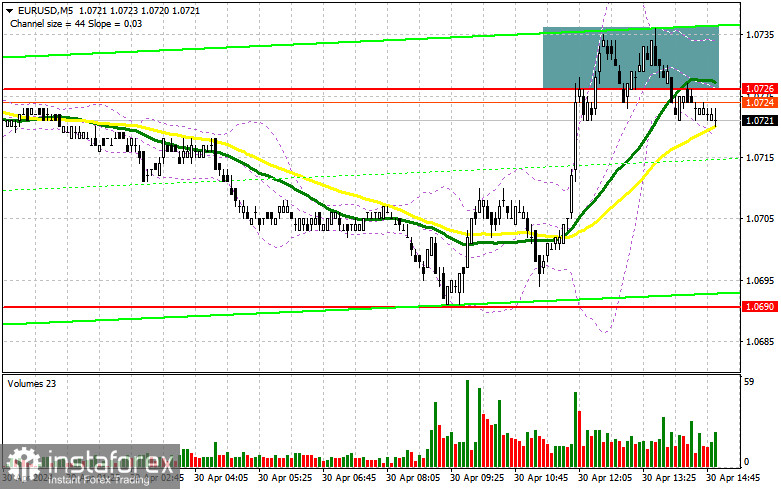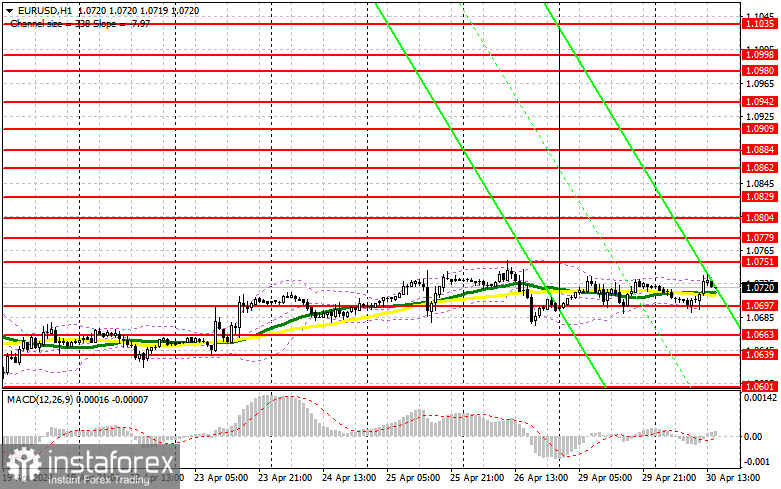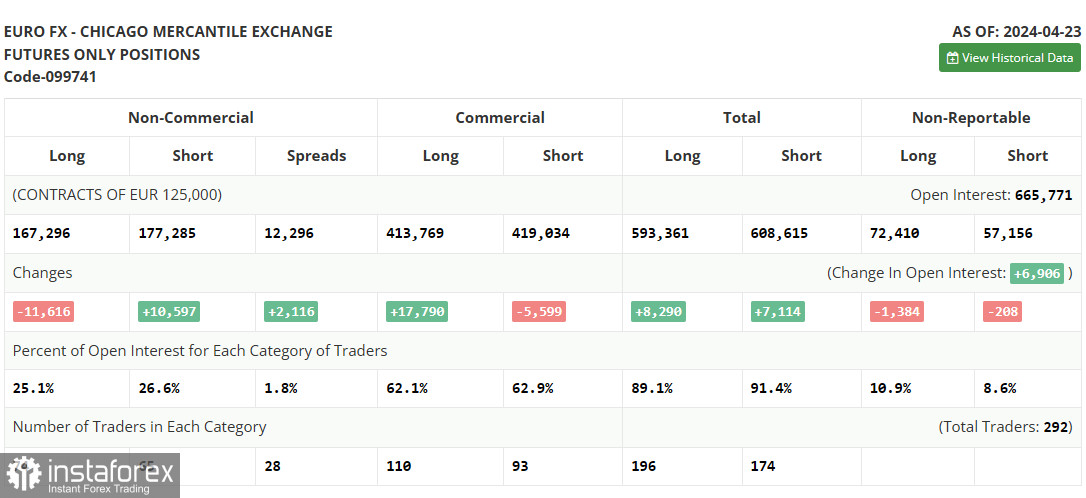In my morning forecast, I pointed out the level of 1.0726 and planned to make trading decisions based on it. Let's look at the 5-minute chart and figure out what happened there. Growth and the formation of a false breakout led to a signal to sell the euro, but significant downward movement of the pair did not occur. The technical picture was slightly revised for the second half of the day.

To open long positions on EURUSD, the following is required:
Obviously, the fairly good statistics from the eurozone and Germany, where economic growth rates turned out to be higher than economists' expectations, managed to support demand for the euro. All this resulted in an attempt to break above the daily high. But the attempt, as I warned, was mediocre. As a result, we got a sell signal, which is still valid at the time of writing this article. Clearly, the euro's rise is limited by tomorrow's FOMC meeting, so be cautious with purchases in the second half of the day. Ahead, we expect data on consumer confidence and the Chicago PMI. Strong reports will lead to a decline in the pair, which I plan to capitalize on. The formation of a false breakout around the larger support level of 1.0697, formed based on yesterday's results, will provide an entry point for long positions capable of pushing the euro back towards the significant resistance of 1.0751, formed based on last week's results. Breaking and updating this range from top to bottom will lead to the formation of a new bullish market and a buy signal with a chance of surging to 1.0779. The ultimate target will be a maximum of 1.0804, where I will take profit. In the event of a decline in EUR/USD and lack of activity around 1.0697, which is more likely, pressure on the euro within the medium-term bearish trend will return. In this case, I will enter the market only after the formation of a false breakout around the next support level of 1.0663. I plan to open long positions immediately on the rebound from 1.0639 with a target of a 30-35 point upward correction within the day.
To open short positions on EURUSD, the following is required:
Euro sellers have all the chances for a pair decline, but for this, I would like to see a test of the larger resistance at 1.0751, which we did not reach in the first half of the day. The formation of a false breakout there, along with strong consumer sentiment in the US, will be an excellent scenario for entering short positions with a target decline to around 1.0697 - support formed by the end of the first half of the day, where the moving averages, playing in favor of buyers, are just above. Breaking and consolidating below this range, along with a reverse test from bottom to top, will provide another selling point, with the pair moving towards 1.0663. I expect more active involvement of large buyers there. The ultimate target will be a minimum of 1.0639, where I will take a profit. In case of an upward movement of EUR/USD in the second half of the day, as well as the absence of bears at 1.0751, bears will say goodbye to hopes of regaining control of the market. In this case, I will postpone sales until testing the next resistance at 1.0779. I will also sell there, but only after an unsuccessful consolidation. I plan to open short positions immediately on the rebound from 1.0804 with a target of a 30-35 point downward correction.


Indicator signals:
Moving averages:
Trading is around the 30 and 50-day moving averages, indicating a sideways market.
Note: The period and prices of moving averages are considered by the author on the hourly chart H1 and differ from the general definition of classical daily moving averages on the daily chart D1.
Bollinger Bands:
In case of a decline, the lower boundary of the indicator, around 1.0697, will act as support.
Description of indicators:
- Moving average (determines the current trend by smoothing volatility and noise). Period 50. Marked in yellow on the chart.
- Moving average (determines the current trend by smoothing volatility and noise). Period 30. Marked in green on the chart.
- MACD indicator (Moving Average Convergence/Divergence - convergence/divergence of moving averages) Fast EMA period 12. Slow EMA period 26. SMA period 9
- Bollinger Bands. Period 20
- Non-commercial traders - speculators, such as individual traders, hedge funds, and large institutions, use the futures market for speculative purposes and meet certain requirements.
- Long non-commercial positions represent the total long open position of non-commercial traders.
- Short non-commercial positions represent the total short open positions of non-commercial traders.
- The total non-commercial net position is the difference between the short and long positions of non-commercial traders.
 English
English 
 Русский
Русский Bahasa Indonesia
Bahasa Indonesia Bahasa Malay
Bahasa Malay ไทย
ไทย Español
Español Deutsch
Deutsch Български
Български Français
Français Tiếng Việt
Tiếng Việt 中文
中文 বাংলা
বাংলা हिन्दी
हिन्दी Čeština
Čeština Українська
Українська Română
Română

